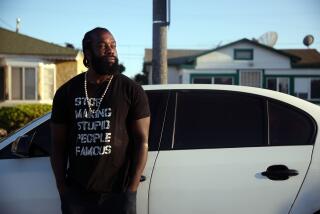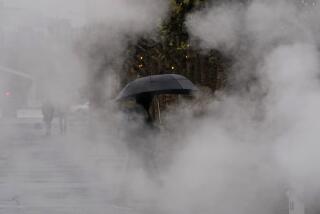Long Beach
Solutions to neighborhood blight that may result from the proposed Los Angeles-Long Beach trolley line are inadequately addressed in a preliminary county environmental impact report, the City Council said this week.
The report was prepared by the firm Environmental Consultants for the Los Angeles County Traffic Commission. Commissioners are expected to certify the environmental report March 13 and settle on a route for the 22.5-mile trolley line March 27.
At issue is whether certain effects of the line, such as increased traffic congestion, noise and vibration, constitute “significant adverse environmental impacts.” If they do, the commission is obligated under state law to identify the problems, state how they will be minimized and pay to minimize them.
City Planning Director Robert Paternoster called the commission report “insufficient” and recommended council members ask the commission to take responsibility for more of the environmental damage that may result from the trolley line.
Paternoster suggested that the environmental report be changed to include plans to relieve the traffic congestion and noise that will result if the Transportation Commission votes to route the trolley down Long Beach Boulevard.
The Traffic Commission also is considering a route just east of the Los Angeles River, which would bring the trolley downtown on an elevated line along Broadway.
In that case, people whose homes face the trolley line would suffer visual blight unless the Transportation Commission heavily landscapes a proposed sound wall, Paternoster said.
Council members voted unanimously to pass Paternoster’s objections on to the Transportation Commission.
The Long Beach Unified School District’s Board of Education voted unanimously Tuesday night to spend $5.2 million recently received from the state to restore programs and maintenance cut from the 1984-85 budget because of economic hard times.
The $5.2 million was paid by the state to reimburse the 79-school district for desegregation costs incurred during the 1983-84 school year. District spokesman Richard Van Der Laan said each school will be given a chunk of the money and the school administration will decide how it will be spent.
The money was divided as follows: $1.17 million for the restoration of elementary school programs; $1.23 for secondary schools; $54,740 for general administration; $437,920 for business administration; $325,220 for instructional services such as books and magnet school programs, and the remaining $2 million for deferred maintenance.
“Maintenance was where we made the heaviest cuts last fall,” Van Der Laan said. “We weren’t able to do much maintenance at all last summer because we didn’t have the money.”
The School of Business Administration at Cal State Long Beach has launched a five-year campaign to raise $1 million from local businesses in an effort to attract new faculty members and upgrade the school, said its dean, Mohamed E. Moustafa.
Fund-raising chairman Joe R. Saucedo, president of Queen City Bank and past president of the Long Beach Area Chamber of Commerce, said a severe lack of money is keeping the university from attracting veteran business professors.
“We are attempting to establish an endowment fund of $1 million,” Saucedo said. “Not only has there been a lack of financial support from the business community to the school of business, but the other thing is that it’s difficult to attract faculty from other parts of the country because of the high cost of housing.”
Because of the difficulty in hiring new professors, the school has had to reduce its enrollment “to maintain the quality of education it wants to effect,” he said.
More to Read
Sign up for Essential California
The most important California stories and recommendations in your inbox every morning.
You may occasionally receive promotional content from the Los Angeles Times.









